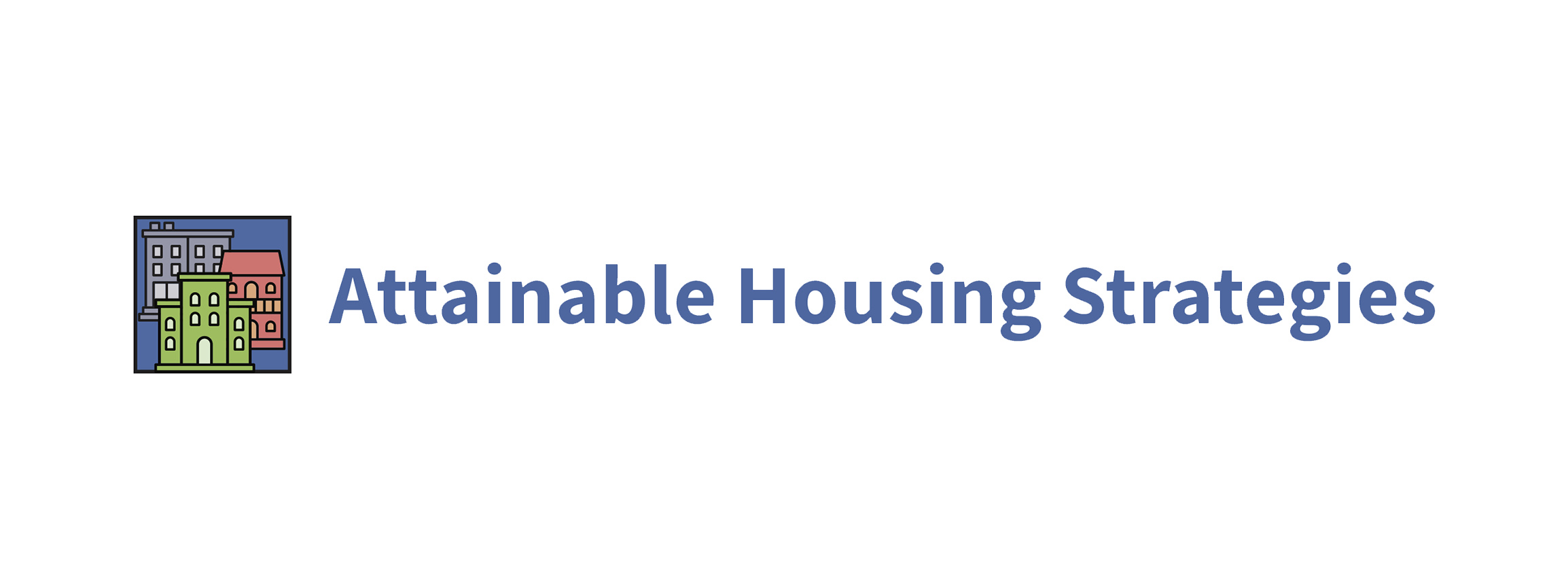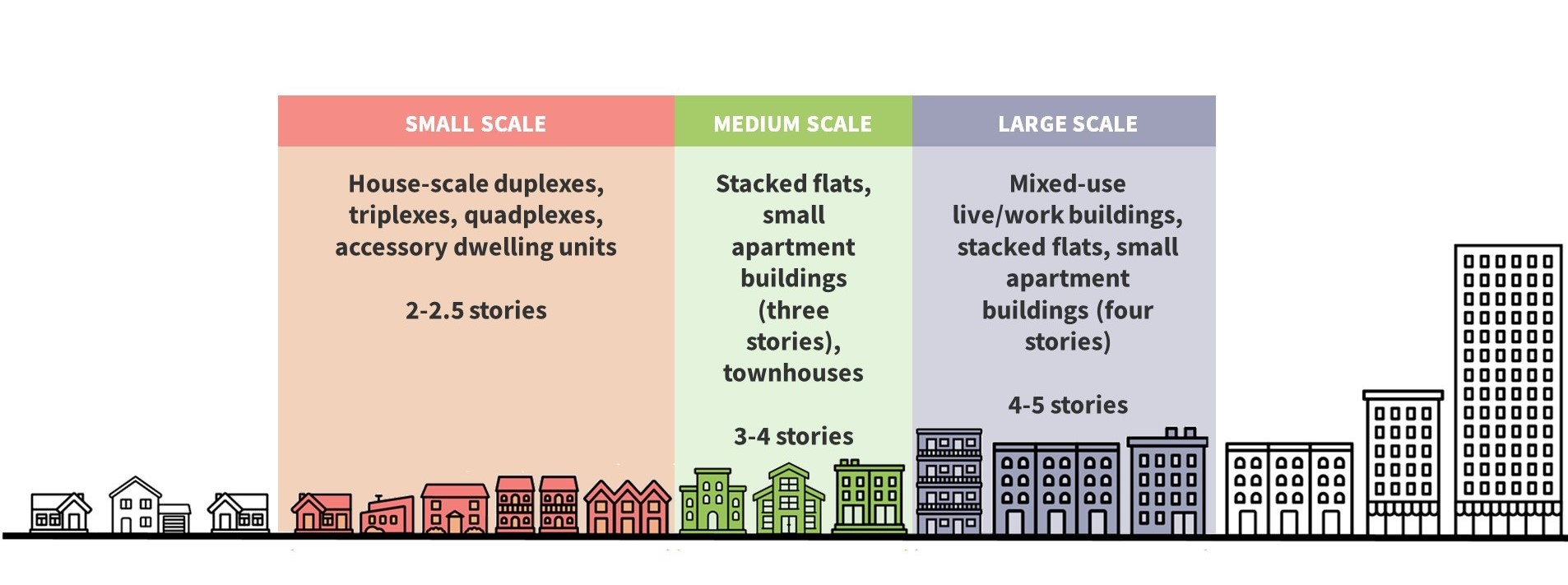
Work sessions are scheduled for September 9, October 7, 21 and November 4; will be streamed live
WHEATON, MD – The Montgomery County Planning Board, part of The Maryland-National Capital Park and Planning Commission (M-NCPPC), will hold four additional work sessions for the Attainable Housing Strategies (AHS) initiative on September 9, October 7, 21, and November 4. This follows two work sessions the Planning Board held on this initiative in July.
During the Attainable Housing Strategies Planning Board Work Session on September 9, Montgomery Planning staff will discuss and seek Planning Board agreement or direction on the following:
- Defining new concepts for the zoning code
- Development standards for new by-right housing types
- Potential role of a Pattern Book—a document containing various pre-approved design options for building small-scale housing.
View the September 9 Attainable Housing Strategies initiative staff report.
The community is invited to submit written comments to the Planning Board via email at mcp-chair@mncppc-mc.org. You can consult the Planning Board’s agenda, posted 10 days before the meeting for more information. Watch the meeting online via live stream or review previous meetings on demand.
Following Planning Board review and approval, the Attainable Housing Strategies recommendations are expected to be transmitted to the Montgomery County Council. The preliminary recommendations for the Attainable Housing Strategies initiative support the housing recommendations in Thrive Montgomery 2050, the update to the county’s General Plan.
The AHS initiative’s timeline has been revised so that transmission of the Planning Board’s recommendations will follow final County Council action on Thrive Montgomery 2050 later this fall.
Summary of the first two Planning Board Attainable Housing Strategies work sessions
The Montgomery Planning Board held two work sessions on the Attainable Housing Strategies initiative on July 8 and 22. The Planning Board made the following decisions during these sessions:
- Definition and scale: The Planning Board was supportive of the goals of the initiative following a refinement that added more direct language and included a focus on economic development. The Planning Board also supported a definition of attainable housing that includes a focus on the intent of attainable housing.
- AHS & Thrive Montgomery 2050 Growth map: The Planning Board was not supportive of connecting the AHS recommendations to the Thrive Montgomery 2050 Growth map to define the geographic area of where the recommendations will apply, given that Thrive Montgomery is not yet adopted. Instead the boundary of zoning blocks will be used.
- Applicable Residential Zones: The Planning Board recommended allowing the following house-scale types, by-right:
- duplexes in the R-40, R-60, R-90, and R-200 zones;
- triplexes in the R-40, R-60, and R-90 zones; and
- quadplexes in the Priority Housing District.
- Priority Housing District: The Planning Board was supportive using the Priority Housing District as the area where quadplexes would be allowed and parking requirements would be reduced. The Board defined the Priority Housing District using a straight-line buffer of 1 mile from Metrorail Red line, Purple Line, and MARC stations, plus 500 feet from a Bus Rapid Transit Corridor, plus River Road and Connecticut Avenue.
- Attainable Housing Optional Method: The Planning Board was supportive of the idea of creating the Attainable Housing Optional Method of development which would allow for middle density attainable housing, but asked staff to come back with options for applicable geography.
- Existing Optional Methods of Development: The Planning Board agreed to update the existing Moderately Priced Dwelling Unit and Cluster Optional Methods of Development to allow the use of triplex and quadplex buildings.
- Zoning Text Amendments: Per guidance from the Planning Board, staff will produce draft Zoning Text Amendments to transmit to the County Council for introduction. The ZTAs would detail the AHS recommendations as edits to Chapter 59 of the County Code.
View the July 8 Attainable Housing Strategies staff report and presentation.
View the July 22 Attainable Housing Strategies staff report and presentation.
The Attainable Housing Strategies effort launched at the direction of the Montgomery County Council on March 4, 2021 to “consider zoning reforms that would allow greater opportunities for Missing Middle Housing in Montgomery County.” Since that time, Montgomery Planning staff has reviewed zoning and planning policies and conducted community outreach to come up with a comprehensive strategy for providing options for residents to find homes at the right sizes, locations and price points for their needs in Montgomery County.
About Attainable Housing Strategies
Attainable housing offers more diverse types of housing beyond single family homes and large apartment buildings. This effort includes Missing Middle Housing, which refers to a range of building types that are compatible in scale, form and construction with single-family homes, but offer multiple housing units. Attainability in housing is the ability of households of various incomes and sizes to obtain housing that is suitable for their needs and affordable to them.
As noted in Montgomery Planning’s recent Montgomery County Housing Needs Assessment, county residents have a wide range of housing needs related to size, transit access, and price, yet almost half of the homes in Montgomery County are single-family houses. The Attainable Housing Strategies initiative aims to identify viable housing options for existing and new residents at the right size, location, and price point for their needs. This is critical as Montgomery County will need to increase its housing supply to meet the demand of an estimated 200,000 more residents by 2045.
Strategies to implement Missing Middle housing are a major part of this effort, as are opportunities for new housing around transit stations, within transit corridors, and near activity centers across the county. The Attainable Housing Strategies effort, as part of Montgomery Planning’s Equity Agenda for Planning initiative, also helps to create more equitable, mixed-income communities. More details on the Attainable Housing Strategies initiative, including Frequently Asked Questions, can be found on Montgomery Planning’s website.

To inform development of recommendations, Montgomery Planning provided the community with multiple opportunities to provide feedback. Videos and presentations from three community meetings and four Housing Equity Advisory Team (HEAT) stakeholder meetings are available on the Attainable Housing Strategies Initiative website. Montgomery Planning also provided office hours on June 3, held a Twitter “Housing Day” on June 14 and ran a social media campaign requesting community members to share their #MyMoCoHome stories. Additionally, Montgomery Planning staff have met with several community and other organizations to discuss the Attainable Housing Strategies initiative.